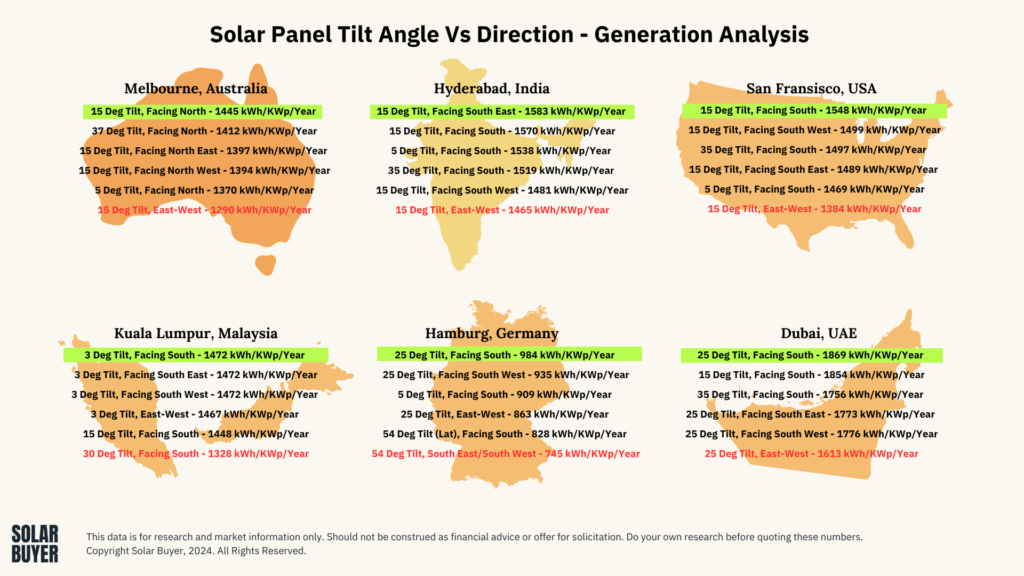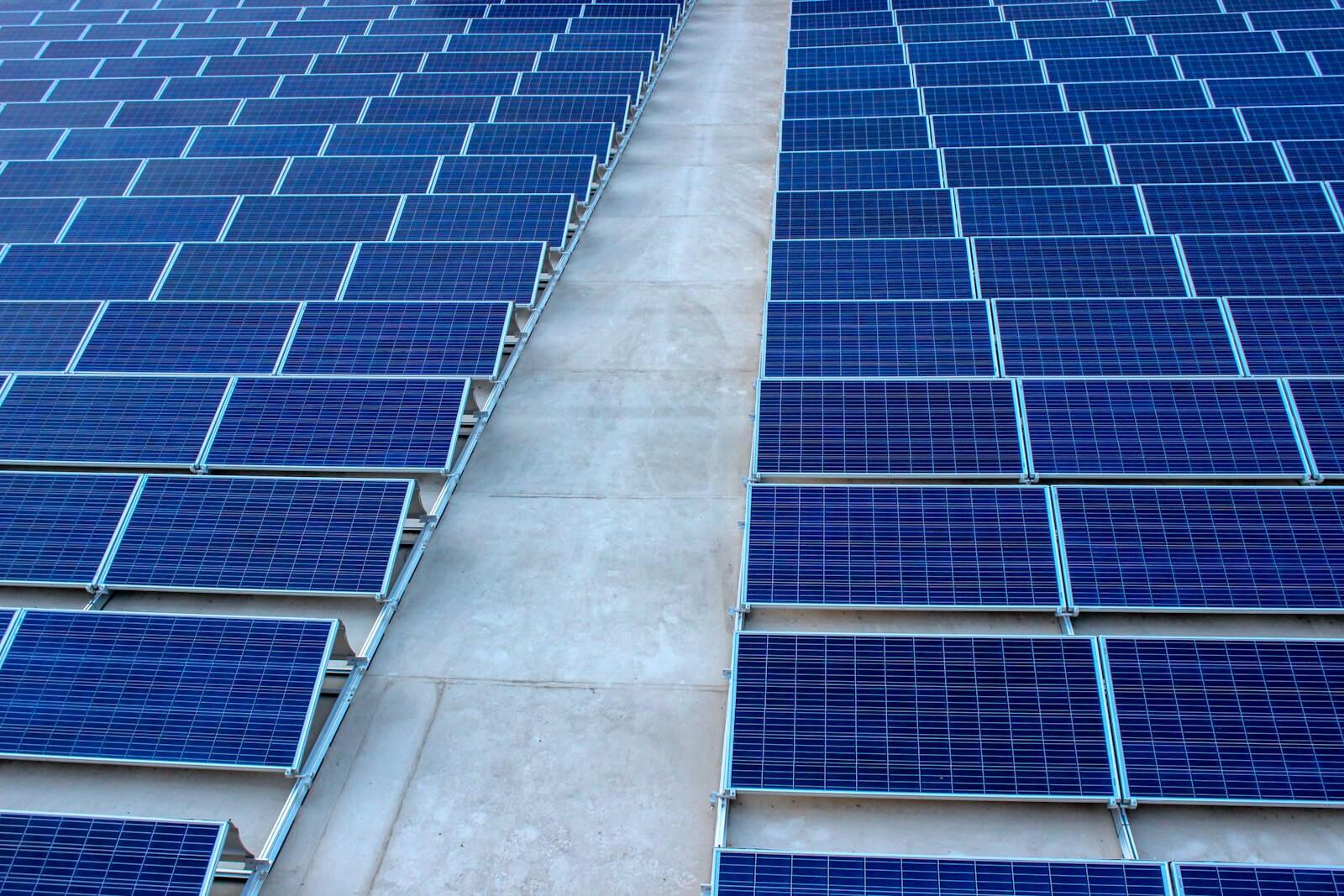When designing rooftop solar PV systems, we often come across this question.
Is the tilt angle important, or is the direction the panels face more crucial?
In a ground-mounted system, you have the luxury of choosing both. But with rooftop installations, especially on tilted roofs, you don’t always get a choice.
What should you optimize for when trying to squeeze every extra unit of generation from your system?
Comparing Tilt Angle vs. Direction Across Multiple Locations
I have analyzed data from eight different sites across six countries, using a 50KW plant with identical modules, inverters, and design. To highlight the impact of weather and insolation, I specifically compared results from India and the US, where conditions vary significantly.
Key Takeaways from the Analysis
- Closer to the equator? Tilt angle matters less. With panels almost flat, direction has minimal impact.
- Between 10° and 30° latitude? Direction becomes more important. This applies to countries like India, UAE, Central Asia, and parts of the USA.
- East-West configuration works best in North Europe and Canada. In other regions, it is less effective.
- Matching tilt angle to latitude is useful mainly in India. In contrast, in the Middle East, Australia, Europe, and the USA, lower angles often generate more power.
- Optimizing for summer generation increases annual output. In colder climates, flatter angles help maximize energy production.

Country-Specific Observations
Australia
- Best setup: 15° tilt facing North.
- Worst setup: East-West configuration.
- Tilt angle is more important than direction.
Germany
- Best setup: 25° tilt facing South.
- Worst setup: High tilt (Winter) facing SE/SW.
- East-West setup provides average results.
- Lower tilt (Summer) gives better annual generation.
- Tilt angle has a bigger impact than direction.
India
- Generation is uniform across configurations.
- Worst setup: East-West configuration.
- Direction impacts generation more than tilt angle.
- Surprisingly, the best setup is tilt at latitude facing South-East.
- Same results in both North and South India.
UAE
- Uniformly high generation across setups.
- Best setup: Latitude tilt facing South.
- Worst setup: East-West configuration.
- Tilt angle impacts generation more than direction.
Uganda
- Located on the equator – best generation across all sites.
- Best setup: Almost flat (1° tilt).
- Minimal variation in direction since panels are nearly flat.
- Increasing tilt angle reduces generation.
USA (California & Boston)
- Best setup: 5°-15° tilt facing South.
- Higher tilt performs better than latitude-based tilt.
- Worst setup: East-West configuration.**
- Tilt angle impacts generation more than direction.
Malaysia
- Best setup: Tilt matching latitude, facing South.
- Worst setup: East-West configuration.
- Minimal variation in direction, as panels are almost flat (3° tilt).
- Increasing tilt angle reduces generation.


Leave a Reply